#BuiltEnvironment
Explore tagged Tumblr posts
Text
1st Edition of Architecture Engineers Awards | 30-31 May 2025 | Paris, France
Theme: The theme for Architecture Engineers Awards is "Architecture Engineers Awards for a Connected Future." Hybrid Event: Architecture Engineers Awards is an innovative hybrid event, offering two dynamic ways to participate.
Architecture Engineers Awards
🔗 Nominate now! 👉 https://architectureengineers.com/award-nomination/?ecategory=Awards&rcategory=Awardee
🌐 Visit: architectureengineers.com
📩 Contact: [email protected]
Get Connected Here:
*********************
Instagram : https://www.instagram.com/architecture_engi.neer617/
Facebook : https://www.facebook.com/profile.php?id=61575108193773
Tumblr : https://www.tumblr.com/blog/architectureengineers
Pinterest : https://in.pinterest.com/
Blogger : https://architectureengineers.blogspot.com/
Twitter : https://twitter.com/Architectu54920
YouTube : https://www.youtube.com/@Architechtureengineer
Linkedin : https://www.linkedin.com/in/architecture-engineer-01a044361/
#architecture#engineeringexcellence#designinnovation#sustainabledesign#greenarchitecture#architecturalengineering#smartbuilding#urbandesign#structuralengineering#futureofarchitecture#builtenvironment#innovativedesign#leed#engineeringawards#creativeinfrastructure#architectsoftomorrow#awardwinningdesign#smartcity
2 notes
·
View notes
Text

Architectural Odyssey: Navigating the Seas of Knowledge
In the grand narrative of architectural marvels, the British Library stands as a formidable flagship, a bastion of knowledge navigating the tempestuous seas of history. Anchored in the heart of London, it commands reverence and respect, much like the battleship Sir Colin Alexander St John Wilson once served upon in the Royal Navy Reserve.
But amidst the solemnity of its corridors and the weight of its literary treasures, a whimsical dance unfolds—a dance between the past and the present, the sacred and the profane. Behold Newton, shrouded in bronze, his modesty preserved by a cloak of artistic reverence. A nod to William Blake's critique of scientific hubris, this sculpture by Eduardo Paolozzi is more than mere metal and mortar—it's a poignant reminder of the delicate balance between reason and imagination.
And what of the architect's role in this intricate tapestry of creation? Like Job, grappling with the mysteries of existence, architects are tasked with navigating the labyrinthine complexities of design and construction. From blueprint to building, they wield their pens and brushes with the skill of seasoned artisans, crafting monuments to human ingenuity that stand the test of time.
But beneath the veneer of artistic expression lies a deeper truth—a truth that speaks to the very essence of a job, a role, a work. For architects, it's not just about erecting structures; it's about shaping destinies, forging connections, and breathing life into the inert clay of possibility.
So, as we gaze upon the shrouded figure of Newton and marvel at the architectural wonders that surround us, let us not forget the architects—the unsung heroes of our built environment. Theirs is a job like no other, a calling that transcends mere profession, and a legacy that echoes through the annals of time.
#ArchitecturalOdyssey#KnowledgeVoyage#ArchitectsJourney#DesignExploration#BuiltEnvironment#LibraryLegacy#ArchitecturalHeritage#CreativeNavigation#ArchitectsRole#CulturalPreservation#architecture#berlin#area#london#acme#chicago#puzzle#edwin lutyens#massimoscolari#oma
2 notes
·
View notes
Text
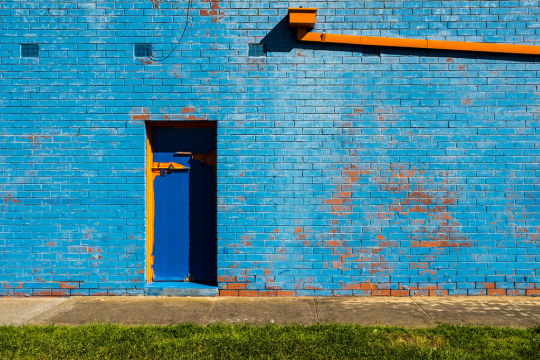
#pretty pictures#sunshinewest#melbourne#australia#australiansuburbia#westernsuburbs#suburbia#facade#door#patina#newtopographics#builtenvironment#weathered
4 notes
·
View notes
Text
#IndustrialConstruction#Manufacturing#Infrastructure#Engineering#ConstructionIndustry#SupplyChain#DataCenters#PowerPlants#BuiltEnvironment
0 notes
Text
My new Substack blog
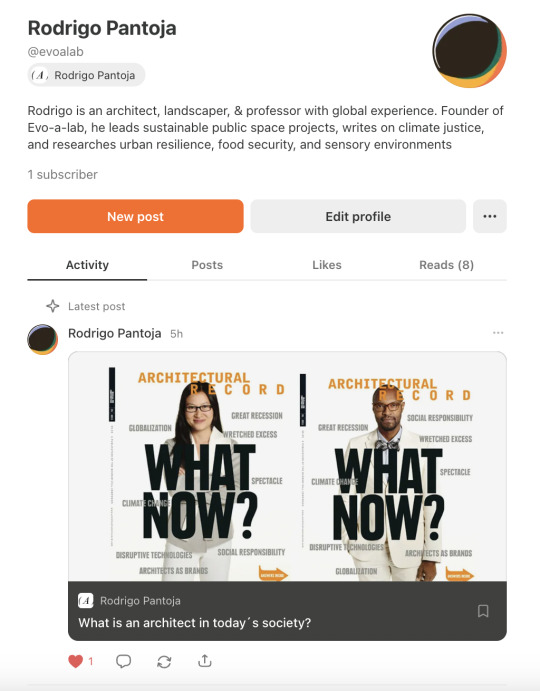
I'm excited to announce the launch of my new Substack blog, where I'll be sharing reflections, research, and explorations on architecture, landscape architecture, and other areas that continue to inspire and challenge my thinking.
To begin, I’ll be republishing a selection of past newspaper articles, essays, academic papers, and personal reflections—pieces that have shaped my journey and continue to resonate. These will lay the groundwork for new, timely writings that I look forward to sharing soon.
The first post is titled “What is an Architect in Today’s Society?” Originally published in 2011, this article still raises questions that I believe are vital to the profession and its role in an evolving world.
Read it here: https://evoalab.substack.com/.../what-is-an-architect-in...
Please feel free to follow or subscribe to my blog—I’ll be more than happy to read your comments and start an engaging conversation. https://substack.com/@evoalab
#ArchitectureMatters#LandscapeArchitecture#ArchitecturalThinking#SubstackWriters#DesignAndSociety#BuiltEnvironment#CriticalPractice#ArchitecturalReflections#UrbanThoughts#arquitectura#evolabarquitectura#evolab#mexicanarchitecture#arquitecturamexicana#paisajismo#architecture
0 notes
Photo

We are pleased to announce the feature of "Betongold – Baumeister Pöchhacker, NÖ" in the latest edition of Baukultur Magazin. This issue highlights contemporary architecture and showcases the innovative designs that contribute to our built environment. We extend our gratitude to Raffael F Lehner for his exceptional contributions to this project. #GraphicDesign #Architecture #RaffaelFLehner_Designer #ModernArchitecture #ProfessionalDesign #BaukulturMagazin #Betongold #BaumeisterPöchhacker #NÖ #BaukulturMagazin #ContemporaryArchitecture #InnovativeDesigns #BuiltEnvironment #ArchitecturalShowcase #RaffaelFLehner #Gratitude #DesignExcellence #ModernDesign #ArchitectureLovers #DesignInspiration #SustainableArchitecture 🌍🏛️
#GraphicDesign#Architecture#RaffaelFLehner_Designer#ModernArchitecture#ProfessionalDesign#BaukulturMagazin#Betongold#BaumeisterPöchhacker#NÖ#ContemporaryArchitecture#InnovativeDesigns#BuiltEnvironment#ArchitecturalShowcase#RaffaelFLehner#Gratitude#DesignExcellence#ModernDesign#ArchitectureLovers#DesignInspiration#SustainableArchitecture
1 note
·
View note
Text
Yeojin Kim: UEP Thesis Award Winner, 2023
Socio-Economic and Built Environment Analysis of NYC Citi Bike Electric Bike Share Origin and Destinations
This outstanding thesis uses quantitative and Geographic Information System (GIS) analysis to investigate travel behavior on the station based electric bike share system (E-BSS) in New York City, explore the impacts of socioeconomic and built environment characteristics and pricing on E-BSS trip durations, and analyze the effects of E-BSS on the accessibility of origin and destination areas. The thesis is contextualized in a comprehensive review of the literature, clearly structured, and presented in a thorough way with convincing evidence to support the findings. The data and method used for this research is appropriate and described in good detail. This thesis revealed interesting findings -- that E-BSS was used for slightly longer distances and duration than classic bikes and that four built environment characteristics had statistically significant impact on trip duration -- which were effectively presented through well-done maps and figures. Furthermore, while race and income were not statistically significant for trip duration, the thesis found that socioeconomic segregation and disparity of E-BSS use are linked with the lack of E-BSS accessibility for low-income Black groups. These findings have policy implications for how to improve the deployment of non-motorized transportation modes in cities.
Abstract
Station based electric bike share systems (E-BSS) require less physical exertion to bikes and allow for faster and longer distance travel, which has the potential to replace shorter car trips and fill the gaps of transit deserts. Despite the benefits of E-BSS, research shows that bike share systems are disproportionately used by white middle income populations. This thesis uses Geographic Information System (GIS) analysis to understand the travel patterns of E-BSS, the impact of race, income, built environment, and pricing characteristics on trip duration, and origin and destination (OD) patterns. The results show that E-BSS was used for slightly longer distances and duration than classic bikes. Moreover, the four built environment characteristics had statistically significant impact on trip duration. While race and income were not statistically significant to trip duration, spatial segregation of socioeconomics and disparity of E-BSS use point to the lack of E-BSS accessibility for low-income Black groups.
#2023#MS#Hollander#YeojinKim#SocioEconomicAndBuiltEnvironmentAnalysisOfNYCCitiBikeElectricBikeShareOriginAndDestinations#SocioEconomic#BuiltEnvironment#NYC#CitiBike#BikeShare#ElectricBikes
0 notes
Text
Part LX
“It once again underscores that the line between fiction and reality is thin, and that sometimes fiction, stemming from its ability to impact our real lives, can be more real than real life.
———————————————
“Architecture compilation”
https://www.instagram.com/vidi_ink/
#Architecture#CompilationVideo#DesignInspiration#ArchitectureVideo#ArchitecturalWonders#InnovativeDesigns#UrbanArchitecture#ModernArchitecture#ArchitecturalMarvels#CityScapes#InspiringBuildings#Archilovers#ArchitecturalFeats#SkyscraperDreams#StructuralBeauty#ArchitecturalLegacy#DesignAesthetics#CreativeSpaces#BuiltEnvironment#EngineeringMarvels#vidi ink#artists on tumblr
1 note
·
View note
Text
City of Longevity – the Barcelona Meet-up take away.

At the Smart City Expo World Congress—attended by more than 25,000 people from 800 cities—we partnered with the Barcelona City Council to host a special offsite event, the Barcelona Meetup, for some of the founding members of the City of Longevity global community. This community was established during the inaugural City of Longevity conference in Newcastle in July 2023.
The purpose of the meetup was to provide updates on the progress of the City of Longevity initiative and to gather feedback and insights from city delegates supporting the program. Additionally, our host, the City of Barcelona, shared their strategic plan and the outcomes of key interventions, with a special focus on the impact of Superilles (or superblocks) on longevity.
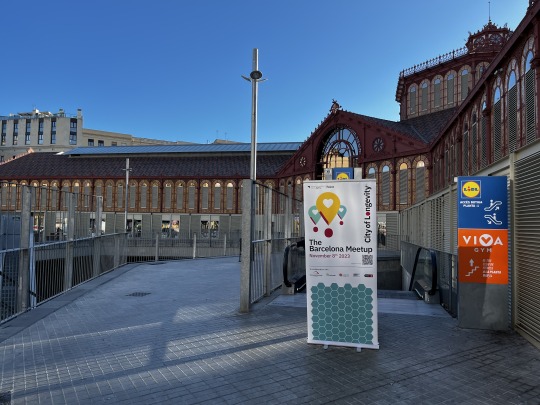
Here are our takeaways:
1.The format: We engage with the city and its citizens.
Thanks to the support of the Barcelona City Council, we held our meeting at the Sant Antoni market, in the heart of the city. As is our tradition, we aimed to eliminate the divide between 'stage' and 'audience,' fostering a discussion where learning comes through dialogue. The topic of longevity is often confined to cultural domains that overlook behavioural patterns, social circumstances, and environmental factors as key determinants of healthy longevity, where "healthy" is closely tied to quality of life. It’s time to place biology and geography on equal footing. Ultimately, the City of Longevity must be embedded within the city to fully absorb and reflect the cultural norms of the host city.
2. Why do we need a City of Longevity? Because we have no choice.
As noted by Joachim Rautter from Berlin: According to the UN, maintaining a healthy weight, exercising regularly, eating a healthy diet, and not smoking can reduce the risk of developing the most common and deadly chronic diseases by up to 80%. Both our lifespan and healthspan—the period during which we’re not just alive but healthy and enjoying a good quality of life—are significantly influenced by our lifestyle, and lifestyles are shaped by the places we live. Cities are the engine that can help citizens improve their lifestyles from the ground up, as Sally Herbert from Newcastle added.
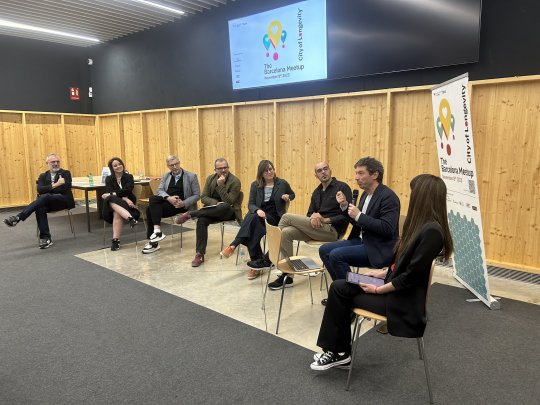
3. Is urban planning a driver for healthy longevity?
The Sant Antoni Market is the epicentre of the Superilles (or superblocks), one of the urban redevelopment projects underway in Barcelona that are literally revolutionizing the concept of public urban spaces, reclaiming for citizens what once seemed to be immovable elements of urban architecture: streets, intersections, and sidewalks.
Much has already been said about Superilles. One of the first studies on their impact suggests that they can contribute to health by reducing both air and noise pollution. However, another study does not confirm whether this strategy encourages people to be more active. It’s too early to draw definitive conclusions. The Superilles still need to transition from being a novelty to becoming a part of everyday life. Thanks to Ariadna Miquel Amengual's enlightening presentation and Daniel Alsina Torra's guided tour of the Superilles, these are our takeaways:
There’s no need to (necessarily) build new spaces; one can intelligently reinvent the existing ones. This is great news for the cities of old Europe, and beyond.
Reinventing existing spaces with people at the centre can foster relationships, encourage walkability, reduce traffic, develop green and cooling areas, expand shared spaces, offer rest and support opportunities, enhance urban connectivity, and reduce air and noise pollution. In our City of Longevity framework, we describe the city as a discreet partner, and the Superilles are a tangible example of this concept.
Changing the architectural context of a space drives behavioural change, affecting both drivers and pedestrians. Pedestrian spaces can be created without demonizing cars or creating ghettos for cyclists, which may be more sustainable and feasible on a larger scale than attempting to completely seal off cities from vehicles.
We’ve likely focused too much on the proximity of services. Proximity also, and perhaps more importantly, means human connection, relationships, and presence. Redesigning spaces is crucial to stimulate this.

4. There is (free) time ahead.
We’ve spent a lot of energy discussing the "15-minute city," but what about the 50 trillion hours of free time we have ahead of us? Collectively, that’s 195 billion hours of leisure per year for those aged 65+ and about 3.9 trillion hours over the next 20 years in the U.S. alone. Considering this phenomenon globally, that's around 50 trillion hours of time affluence—time that needs to be filled with fun, stimulating, nourishing, purposeful, and even transformative activities.
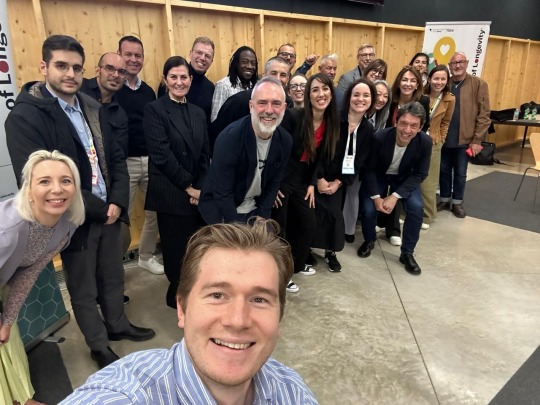
5. Involving citizens is not only right, but also possible.
The experiences of all the cities participating in the debate underscored how citizen involvement and participatory platforms are essential to any discourse on the City of Longevity. It seems obvious, but it’s not always practiced. As Professor Peter Madden said, "Almost none of the innovations on display at the adjacent Smart City World Expo Congress were citizen-driven; there is still a lot of rebalancing to be done." But when done correctly, the benefits to the population and their healthy life expectancy are evident.
6. There is a need for "relationship doctors."
This idea was suggested by Gianluca Galimberti from Cremona. Despite the endemic shortage of doctors, there may be a need to invent new professional roles—relationship doctors, relationship nurses—professionals capable of fostering relationships between citizens when architecture alone is not enough. This role is even more necessary in light of the integration of other cultures into our own.
7. Schools are engines for healthy longevity.
As both Ariadna and Margarita Cejas from Buenos Aires emphasized, schools are not only vital for education but also as spaces for gathering, relationship-building, and fostering the role of children as actors and ambassadors of behavioural change within their families.
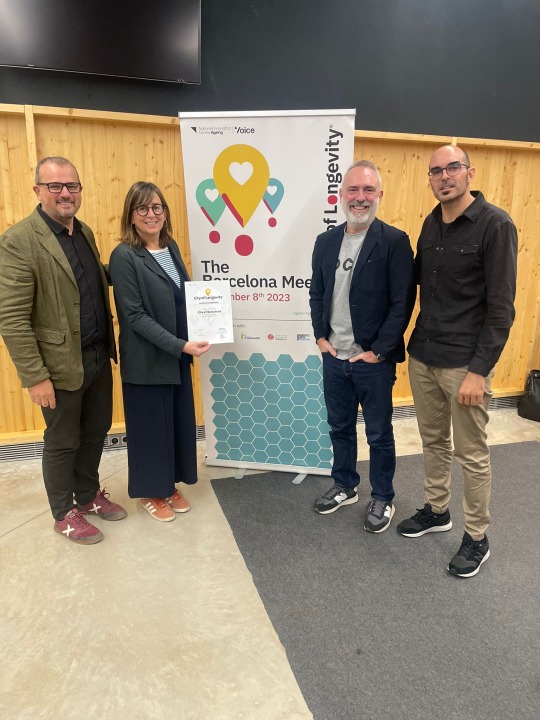
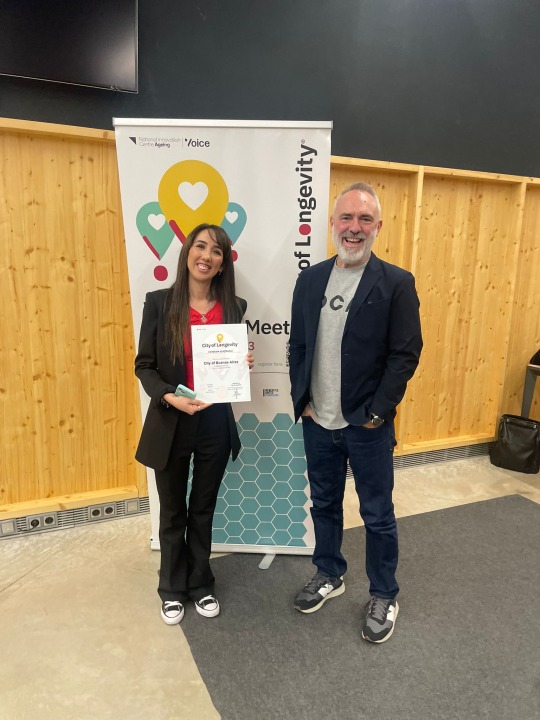
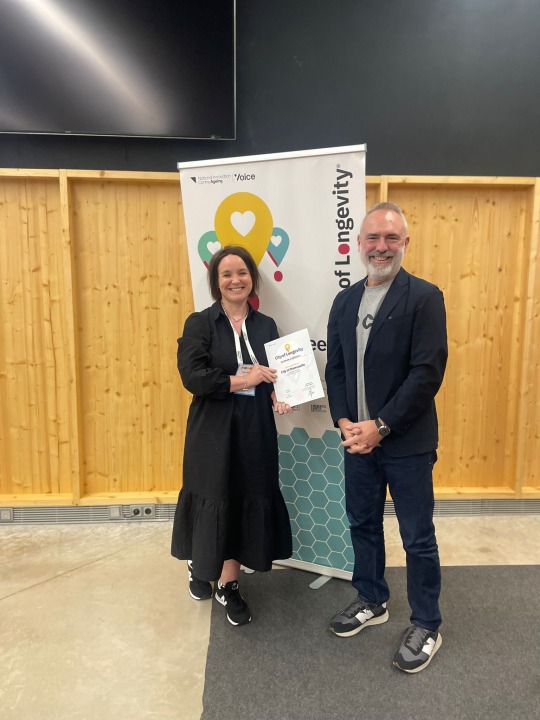
8. Who pays for it?
An orchestrated longevity program needs a budget, and this budget comes from hybrid interactions among all stakeholders. Interventions such as the Superilles yield a return on investment, primarily in society (and, in the long run, by reducing healthcare costs) and in the economy—both local, which benefits from the reclaimed space, and global, which can finally see the trillion-dollar promise of the longevity economy materialize in specific locations. Finally, there’s the data economy. It’s time to engage citizens in a serious discussion about how they can own their digital identity and decide how, and whether, to monetize it. The city must act as an intermediary in this contract, which could revolutionize both the speed of innovation and its sustainability.
#cityoflongevity#dispatchesfromcol#behaviours#barcelona#cremona#newcastle#berlin#buenos aires#superilles#superblocks#event#delegatecities#builtenvironment#urbanplanning#lifestyle
1 note
·
View note
Text
**The Future of Real Estate: AI and Robots**
Artificial intelligence is reshaping the landscape of architecture, paving the way for innovative possibilities. Designing smart cities and elevating our daily experiences are just the beginning of this revolutionary journey. #AIinRealEstate #SmartCities
As robots play an increasingly crucial role in our lives, questions arise about the impact on human jobs and our interactions with these intelligent machines. What does the future hold for the workforce in the era of automation? #RobotsInOurWorld
Technology is propelling the field of architecture into uncharted territory. Envision smart buildings that not only adapt to our needs but also actively engage with us. The future promises a dynamic and interactive architectural experience. #FutureOfArchitecture
Join us on an exploratory video journey that delves into the cultural, real estate, and architectural evolution. Witness firsthand the integration of AI into our daily lives and the transformative impact of robots on our architectural landscape. #ArchitecturalEvolution #AIIntegration
Embark on this impactful exploration of the future of architecture, where artificial intelligence and robots collaborate to shape the built environment of tomorrow. #BuiltEnvironment #AIandRealEstate
0 notes
Text
Here's 'Orb', one of my two new paintings for the “Angels in the Architecture//Devils in the Detail” group exhibition with @talongallery . The grand opening is happening this Thursday at the gallery's brand new gallery space in the Alberta Arts District from 6pm. If you're in Portland, please come by to check out all the amazing artwork that will be on display.
If you would like to receive a preview in advance of the show's opening, please email: [email protected]
#JoleneLai #orb #raven #oilPainting #portland #talonGallery #art #architecture #builtenvironment #exhibition #artcollector #painting
instagram
2 notes
·
View notes
Text

Architecture as Sign: A Semiotic Approach to Space, Meaning, and Cultural Intervention
In architecture, the transition of an object from raw material to meaningful artifact is not merely a physical act but a semiotic one. It is this transformation that turns stone into a "club" or a natural hollow into a "cave"—a shift in perception where human intentionality and cultural frameworks shape how we see and interact with the world around us. The process involves the mind's intervention, reshaping our relationship to natural materials without necessarily altering their physical form. This transformation is fundamentally semiotic, relying on signs and symbols to encode new meanings.
The interplay of mind, signs, and objects underscores the interdependency of how we define these concepts. Through intentionality, an object is imbued with new significance. This is not merely an intellectual exercise but one rooted in human history and everyday experience. The transformation of a horizon into a meaningful boundary or a landscape into a cultural profile shows how even our most basic interactions with the environment are deeply symbolic.
In the realm of architecture, these processes unfold on a grand scale. The Modernist assumption that architecture is a functional response to industrialized society—seen in the idea that buildings are shaped by "inevitable, logical" forces—misses the inherent value systems architecture conveys. Far from being value-free, every structure embodies an ideological stance, consciously or otherwise. The design of a building is a form of meaning-making, where spaces are organized and interpreted according to a specific worldview.
Historically, classical architecture emphasized the representation of nature through ornamental forms, suggesting a mimetic relationship between the built and natural environments. Yet even this imitation was complex and often ambiguous, as certain classical elements derived only loosely from nature. This reveals a deeper principle: architecture is not merely a mirror of the natural world but a reinterpretation of it, imbued with human ideas and social orders.
Modern architecture, particularly in totalitarian contexts, illustrates how buildings can become overt political symbols. The avant-garde movements of the 1920s, including Constructivism, embraced advanced forms that symbolized the ideology of a new social order. The push for "minimum existence" dwellings, for instance, reflected not only practical responses to urban problems but also a broader political vision about how people should live. This example illustrates the extent to which architecture is embedded within broader ideological systems, where even the simplest design choices carry the weight of political and social narratives.
By examining architecture through the lens of semiotics, we see that every element—from material choices to spatial arrangements—is a signifier of deeper meanings. This understanding urges us to rethink how architecture functions in society, not merely as a solution to material or functional problems but as a communicative act that shapes cultural, political, and existential understanding.
Architects, therefore, must become conscious of their role as creators of signs, using space not just to build but to signify and critique the cultural systems they inhabit. This recognition opens the door for more radical, reflective design approaches that question the existing narratives and ideologies embedded in our built environments, ultimately proposing new ways to engage with the world around us.
Incorporating the perspectives derived from semiotic theory, this analysis aims to provoke new thinking on how architecture can serve not only as a practical art but as a form of cultural intervention. Through signs and symbols, architecture becomes a medium for expressing—and challenging—the social and political forces that shape our lives.
#ArchitectureAsSign#SemioticArchitecture#CulturalMeaning#SpatialSemiotics#ArchitectureAndIdeology#DesignAsLanguage#ArchitecturalIntervention#SymbolicSpace#ArchitectureTheory#BuiltEnvironment#CognitiveArchitecture#architecture#berlin#area#london#acme#chicago#puzzle#edwin lutyens#oma#massimoscolari
1 note
·
View note
Text
🌟 Excellence in Research Award – Nominations Now Open! 🌟
The Excellence in Research Award celebrates groundbreaking and original research that has made a measurable impact in the built environment. It highlights dedication to innovation, academic excellence, and contribution to the advancement of architectural and engineering disciplines.
Architecture Engineers Awards
🔗 Nominate now! 👉 https://architectureengineers.com/award-nomination/?ecategory=Awards&rcategory=Awardee
🌐 Visit: architectureengineers.com
📩 Contact: [email protected]
Get Connected Here: **********************
Instagram : https://www.instagram.com/architecture_engi.neer617/
Facebook : https://www.facebook.com/profile.php?id=61576995475934
Tumblr : https://www.tumblr.com/blog/architectureengineers Pinterest : https://in.pinterest.com/
Blogger : https://architectureengineers.blogspot.com/
Twitter : https://twitter.com/Architectu54920
YouTube : https://www.youtube.com/@Architechtureengineer
Linkedin : https://www.linkedin.com/in/architecture-engineer-01a044361/
#ExcellenceInResearch #architectureawards #engineeringinnovation #builtenvironment #ResearchRecognition #architectureengineering #academicexcellence #sustainabledesign #innovativeresearch #womeninstem #architectureresearch #engineeringresearch #researchimpact #researchawards #futureofdesign #smartarchitecture #greenengineering
0 notes
Text

Reliable and trusted Unit 04 Construction Practice and Management Assignment Help! Download Higher National Diploma course Solution now! Order Instant Solution on WhatsApp: +44 141 628 6080!!
#Unit04 #ConstructionPractice #Management #AssignmentHelp #Solution #AssessmentHelp #HND #HigherNationalDiploma #Construction #BuiltEnvironment #HNC #UKtopwritingservice #BTEC #OnlineTutor #AskTutor #Diploma #AssessmentWritingService #UK
0 notes
Text
Sustainable Bridge Infrastructure Development
Creating a better future today! Building sustainable infrastructure is more than a trend — it’s the bridge thus far to a resilient and prosperous future. Learn how we can design and create better infrastructure. Let’s build for the ages, with minimal environmental impact and maximum community benefits.

#sustainableinfrastructure #greenbuilding #ecofriendly #urbandevelopment #resilientcities #climateaction #infrastructuredevelopment #sustainabledesign #smartcities #futureofconstruction #renewableenergy #circulareconomy #netzero #builtenvironment #innovation
0 notes
Text
Scope Computers
Architecture Assistant
An Architecture Assistant plays a vital role in supporting the architectural design process, working closely with architects and project teams to bring creative ideas to life. 🏛️ They are responsible for creating detailed drawings, sketches, and 3D models using design software such as AutoCAD, SketchUp, and Revit. 📐💻 They also conduct research, gathering information on building codes, materials, and design trends to ensure compliance with industry standards. 📊📚 Additionally, they assist in preparing presentations, project documents, and client communications. 📝👥 An Architecture Assistant collaborates with contractors, engineers, and other stakeholders to ensure smooth project execution. 🤝🚧 Their strong organizational skills, attention to detail, and passion for innovative design make them essential to the success of architectural projects. 🌟🏗️
📞 Contact Information: 📧 Email: [email protected] 📱 Phone: +91 9079643526

#architectassistant#constructionsite#womeninconstruction#architecturecareer#jobopportunity#careergrowth#civilengineering#projectmanagement#designprofessional#builtenvironment#workingwoman#hardhat#safetyvest#constructionjobs#careerdevelopment#skillsbuilding#jobsearch#hiringprocess
0 notes